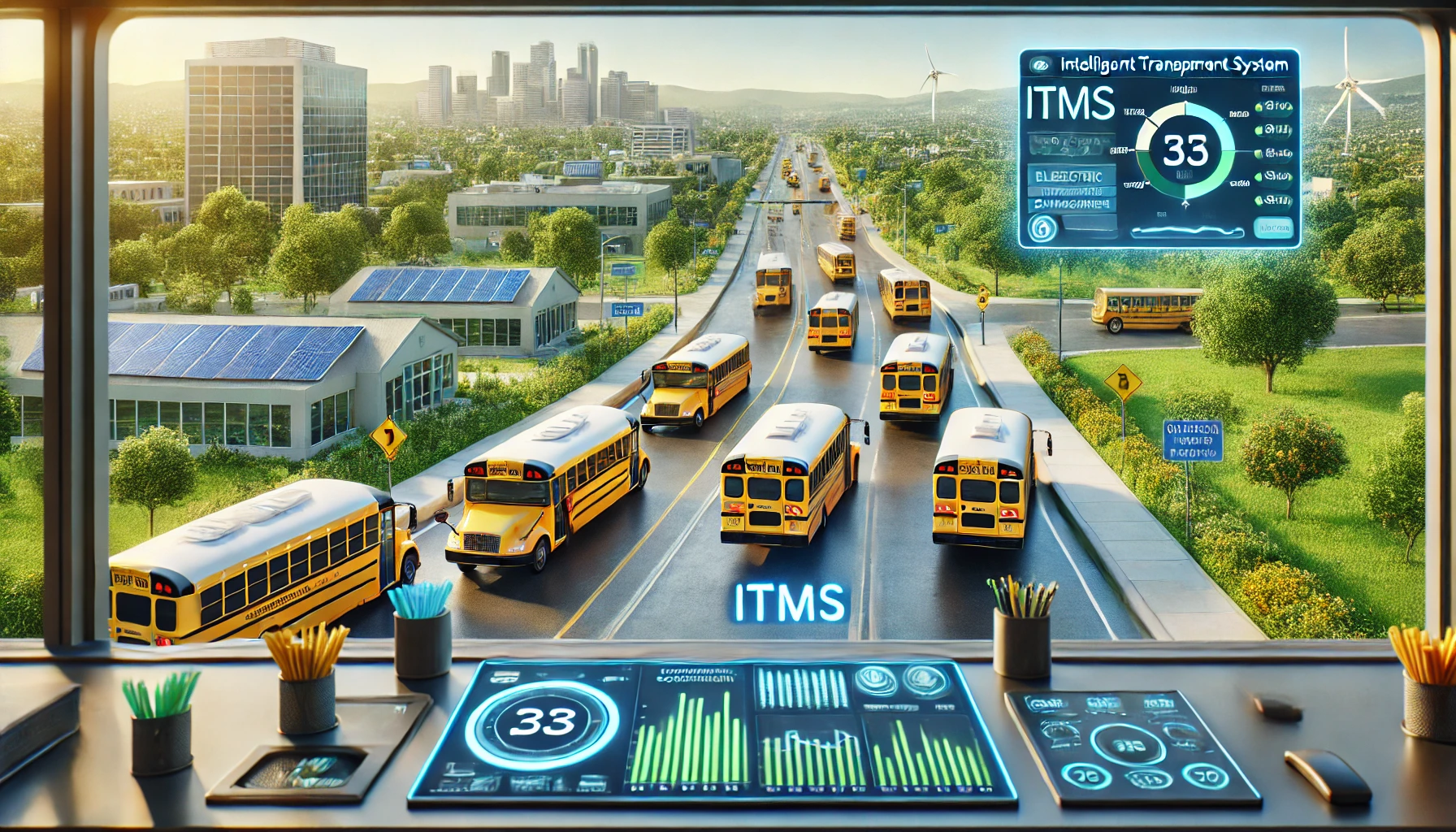How ITMS Helps Reduce Carbon Footprint in School Transportation?

Today, with increasing environmental awareness, industries worldwide are seeking means of reducing their footprint on the earth. One aspect that is rarely considered when sustainability is mentioned is school transport. School buses, though necessary, can be major contributors to carbon emissions, particularly when routes are not efficient and vehicles are underutilised. But now, with the Intelligent Transportation Management Systems (ITMS), schools can use a strong system that can reduce their carbon footprint and be a part of a greener world.
What is ITMS?
An Intelligent Transportation Management System (ITMS) is an information technology-enabled system designed to support the ease of managing and optimizing transportation systems. For school districts, this system combines AI, real-time information, and powerful analytics to cut routes, make bus fleet management easier, and maximize overall efficiency. With ITMS, schools can make smarter decisions that not only enhance school transport convenience and safety but also make it greener.
1. Optimize Route Planning
One of the strongest means ITMS mitigates the carbon footprint of school transport is by optimal route planning. School bus routes are traditionally established according to standard patterns, which are not necessarily the most fuel-saving or time-saving. ITMS, however, employs AI-driven algorithms that consider a high number of factors, including traffic flow, pick-up/drop-off locations for students, and current weather conditions, to generate optimized routes.
These corridors reduce total travel distance for buses and lower travel time so that buses can travel the minimum distance and lowest cost route. This translates into fewer buses needed, less fuel consumption, and lower carbon emissions. Through effective route planning, ITMS not only decreases travel time but also the environmental burden of school transportation, making it a more eco-friendlier system.
2. Intelligent Resource Allocation
One more manner in which ITMS helps make transportation more sustainable is by implementing smart resource allocation. Traditional methods operate a set number of buses with a set number of students in each, regardless of demand or scheduling. This results in wasteful travel or overload of one bus, both instances being wasteful and producing pollution and fuel usage.
With the use of ITMS, schools are more effectively able to manage bus capacity than demand for students. The system assigns buses dynamically according to the number of students that will be moved and optimizes the utilization of the fleet. This helps schools run fewer buses while still ensuring everyone reaches their destination safely. Through optimal utilization of buses to their maximum capacity, ITMS minimizes the number of unused buses on the roads to a minimum, thereby cutting down the overall emissions and making the transportation process efficient as well as environmentally friendly.
3. Less Idle Time
Idle time contributes to the major share of fuel loss and additional carbon emissions in typical school transportation operations. Excess pollutants are released into the environment by buses idling during stops or student pick-ups. ITMS aims at minimizing idle time through enabling real-time monitoring and coordination devices.
ITMS can also accurately offer arrival and departure times so that buses only operate when necessary. By reducing idle time, schools can continue to reduce fuel consumption, resulting in lower greenhouse gas emissions and a cleaner environment.
4. Data-Driven Insights for Long-Term Sustainability
ITMS not only optimizes routes and resources in real time but also gives schools valuable data-driven insights to inform long-term sustainability planning. By examining trends and patterns, the system can identify areas of opportunity, i.e., isolating high-emission corridors or inefficient usage of buses. Based on this, schools can regularly revise their transportation plans to minimize their footprint.
In addition, ITMS allows schools to track fuel usage continuously, thereby establishing measurable goals for sustainability and tracking their performance. This is evidence-based practice, which guides the school managers to make wise decisions that put focus on environmentally friendly operations while ensuring the comfort, safety, and well-being of students are not compromised.
Although ITMS is the principal means of school transport carbon reduction, one cannot overlook the fact that sustainability is a collective responsibility. The schools, the bus operators, and the local authorities need to join hands to build a greener world. ITMS acts as a driver for such change by offering the means to make better, more sustainable choices, but the community at large must be willing to adopt green measures, including cleaner fuel sources, electric school buses, and walking or biking to school.
Conclusion
In conclusion, enhancing school transport need not necessarily always be a priority, but it is a critical move toward an eco-friendly tomorrow. Arena Softwares Intelligent Transportation Management System (ITMS) allows schools to decrease emissions exponentially through improved routing planning, resource-efficient allocation, and decreased idle time. By optimizing all aspects of school transportation, ITMS makes operations greener, lessens the environmental footprint, and increases efficiency for everyone involved - students, parents, school employees, and most importantly, the planet. Implementing Arena's ITMS is a victory for the environment and for generations of students to come who will live in a cleaner, healthier world. Get in touch with Arena Softwares to explore how ITMS reduce the carbon footprint in school transport.
